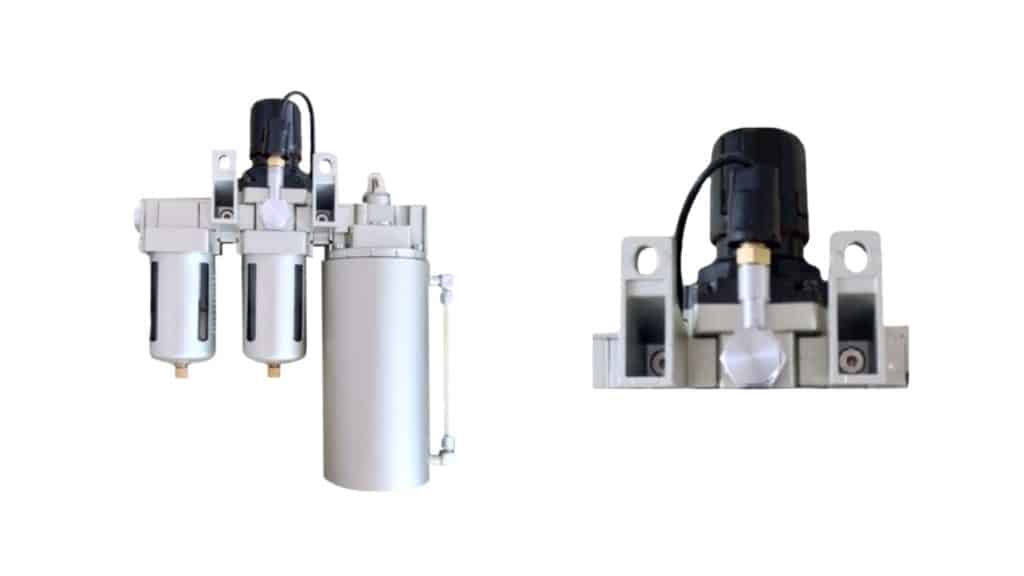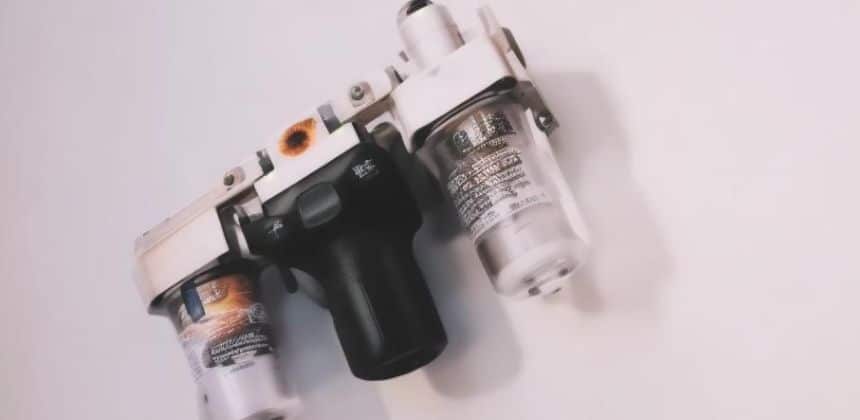What Is A FRL Unit – Filter Regulator Lubricator
FRL unit, short for Filter Regulator Lubricator, is a key component in a pneumatic system. It combines the functions of a filter, regulator, and lubricator to control air pressure, remove impurities, and provide lubrication to ensure stable operation and long service life of pneumatic equipment.
Components for FRL units
- Filter: Filters usually use different precision filter media, such as filter paper, filter mesh, or activated carbon, to meet different filtration requirements.
- Regulator: Regulators usually include an adjustment knob, allowing the user to adjust the output air pressure as needed.
- Lubricator: A lubricator typically uses oil or grease and delivers the lubricant to the parts to be lubricated through the flow of gas.

Principle of operation of the FRL unit
First, the gas passes through a filter, where the filter media will effectively remove impurities and solid particles from the air, ensuring the cleanliness of the gas. The gas then enters the regulator, where an adjustment knob is used to set the desired output air pressure. The regulator monitors the pressure of the gas flowing through the system and adjusts the output air pressure according to the set value, keeping it stabilized in the right range. Finally, the gas passes through the lubricator, where lubricant is added to the gas and delivered with the gas stream to the parts that need lubrication, reducing friction and wear, protecting the equipment, and increasing the operating efficiency and life of the system.
Types of FRL units
- FRL unit combinations: FRL unit combinations are typically used in applications that require filtration, pressure regulation, and lubrication of gases, such as pneumatic tools, pneumatic control systems(KES15/20 1/2″ 3/4″ Plastic Diaphragm Pump), and automation equipment. They work together to ensure the stable operation of pneumatic systems and the long-term reliability of equipment.
- FL unit combinations: Typically used in applications that require filtration and lubrication of gases, but not pressure regulation, such as pneumatic drills, pneumatic spray guns, and pneumatic conveying systems. They provide a clean and well-lubricated gas supply, extending equipment life and reducing friction and wear.
- RL unit combinations: Typically used in applications where air pressure needs to be regulated and lubricated, but filtration is not required, such as pneumatic braking systems, pneumatic clamps, and pneumatic presses. They ensure that pneumatic systems output a stable air pressure and provide the right amount of lubricant to protect equipment from friction and wear.
How to choose the right FRL unit?
Operating environment: Firstly, the operating environment in which the pneumatic system is located needs to be considered, including temperature, humidity, and the degree of presence of contaminants and corrosive substances. Selection of the FRL unit should be able to adapt to these environmental conditions, and provide appropriate protection measures to ensure stable operation of the system.
- Pneumatic pressure requirements: Based on the operating pressure range of the pneumatic system, select the pressure range and adjustment accuracy of the regulator. If the air pressure requirements are higher, it may be necessary to choose a more precise regulator to ensure that the system can stabilize the output of the required air pressure.
- Flow requirements: Consider the flow requirements of the pneumatic system and select the appropriate size and type of filter and lubricator. High flow systems may require larger capacity filters and lubricators to ensure adequate gas flow and lubricant supply.
- Duty cycle: Consider the duty cycle and frequency of the pneumatic system and select an FRL unit with high durability and stability. If the system is required to operate continuously for long periods of time, it may be necessary to select components with better durability to minimize maintenance and replacement frequency.
- Application requirements: Depending on the specific application requirements of the pneumatic system, select the appropriate filter accuracy, lubricant type, and lubrication method. Different applications may require different filter finenesses and specific types of lubricants to meet system requirements.
- Cost considerations: Finally, cost considerations need to be taken into account to select a cost-effective FRL unit. Consider the above factors and select the most appropriate components based on budgetary constraints to ensure system performance and reliability.
Summary
With proper filtration, pressure regulation, and lubrication, FRL units protect pneumatic equipment from contamination, excessive air pressure, and frictional wear, extending equipment life and improving system stability and reliability. Choose the right FRL unit for your application to make your pneumatic system more efficient, safe, and reliable.AOBL not only offers various types of FRL units, but also covers pneumatic diaphragm pumps, electric diaphragm pumps, progressive cavity pumps, chemical pumps, and vertical centrifugal pumps. We are committed to providing you with a full range of solutions to ensure that your pneumatic and pump equipment runs smoothly, efficiently, and reliably. Whether you need to replace your existing equipment or are looking for new pneumatic and pump solutions, we can provide you with professional services and high quality products. Feel free to contact us and let us discuss your needs and customize the best solution for you!

